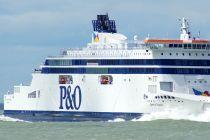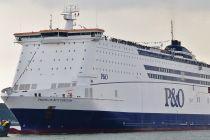Hull (England)
Cruise Port schedule, live map, terminals, news
Region
Ireland - UK - British Isles
Local Time
2025-04-01 00:24
 43°F
43°F 6.2°C

 Light breeze
Light breeze2.9 m/s
 53 °F / 12 °C
53 °F / 12 °C 37 °F / 3 °C
Port Hull cruise ship schedule shows timetable calendars of all arrival and departure dates by month. The port's schedule lists all ships (in links) with cruises going to or leaving from Hull, England. To see the full itineraries (ports of call dates and arrival / departure times) and their lowest rates – just follow the corresponding ship-link.
| Day | Ship | Arrival | Departure |
|---|---|---|---|
| 16 August, 2025 Saturday | 08:00 | 22:00 |
Kingston upon Hull is a major ferry port located between Hull River and Humber River in England (UK). The city has total area approx 71 km2 (28 mi2) and population around 260,000.
Hull was officially established in 1299 by Edward I (1239-1307, King of England between 1272-1307). The old town retains its medieval architecture and has many buildings from the 18th century. Wilberforce House (now a museum) is the birthplace (1759) of William Wilberforce (1759-1833, anti-slavery campaigner). In downtown is the 14th-century Holy Trinity Church - England's oldest parish church. Reclamation of the old docks provides the city with boat marinas, nature parks, a Maritime Museum.
Close to Kingston upon Hull is Humber Bridge - suspension bridge, which has the world's longest single-span (2220 m / 7280 ft). Also worth seeing is Beverley with its ecclesiastical architecture, including Gothic Minster (13th century) and Saint Mary's Church (14th century). Burton Constable Park is to the northeast of the city. To the northwest is Skidby Windmill (19th-century, still operational mill).
Port Hull
Port Hull is located at the confluence of two rivers - Hull and Humber (estuary) and is operational since at least the 13th century. The Hull Dock Company (established 1773) constructed the first dock on a land formerly occupied by the town walls. The seaport is owned and operated by ABP (Associated British Ports). It handles ~1 million passengers (ferry and cruise) annually and is ranked UK's largest import location for softwood timber.
During the next half century, several docks (Town Docks) were constructed around the old town (on land formerly occupied by the town's fortifications). Port's first dock (Victoria Dock) was built east of Hull River and opened in 1850. In 1862 started the construction of docks along Humber River's banks (to the west). There were built West Dock, Albert Dock, and the William Wright extension. The St Andrew's Dock (further west) was opened in 1883. A new eastern dock (Alexandra Dock) was opened in 1885. In 1914 was opened King George Dock. Town Docks, St Andrew's Dock and Victoria Dock became inoperational by the 1970s and were subsequently closed. Some were later redeveloped (Humber and Railway) to a leisure complex (named "Hull Marina").
The company AarhusKarlshamn operates a large vegetable-based oil products processing plant at the dock. The Kingston Terminal (southeast of Queen Elizabeth Dock) is used for coal products import cargoes. Port Hull has a total of 10 Ro-Ro vessel berths within its 2 docks.
In 2014 was opened a facility to supply Drax Power Station (coal-fired) with capacity to co-fire ~1 million tons biomass and petcoke per year. A specialised dry bulk warehouse for biomass storage was opened in 2015.
In February 2018, at Hull Container Terminal were installed two new gantry cranes. ABP's investment of GBP 10,5 million doubled the terminal's annual capacity (trade volume) to over 400,000 TEUs (containers). Each of the 600-ton cranes has height 50 m / 64 ft. Both gantry cranes arrived on February 15. They were delivered by Hansa Heavy Lift (vessel HHL Lagos) and were transported fully-assembled. The new Ireland-built Liebherr cranes became fully operational by April 2018. They were part of ABP's GBP 15 million investment which also included purchasing stackers and tug trailers, and creating a new storage area (sized 9,000 m2 / 96,900 ft2).
ABP's Hull Container Terminal covers an area of 10 acres and is ranked 3rd largest on England's east coast. Company's 4 containership ports (Grimsby, Goole, Immingham, Hull) handle around 13% of the UK’s shipping trade (annual worth around GBP 75 billion). In late-December 2018, Hull Container Terminal became directly connected to Asia after ABP signed a trade deal with Maersk (world’s largest container shipping line). ABP’s four seaports on Humber estuary (Grimsby, Goole, Immingham, Hull) handle around 17% of UK’s all marine shipping trade (worth ~GBP 75 billion).
In January 2019, ABP sighed with "Thor Shipping & Transport AB" a 10-year lease deal for company’s 10-acres terminal (plus 2,5 acres TEU storage) at King George Dock. The agreement allows major infrastructure improvements and is part of ABP's GBP 6 million investment in Thor's terminal. The budget also included GBP 3,5 million for a new Liebherr crane (mobile harbour crane installed in March). The 2-berth terminal serves boxships and breakbulk carriers connecting UK with Sweden (twice weekly service), Belgium (Zeebrugge, thrice-weekly), Finland and Iceland (once in 2 weeks). Terminal's annual capacity is 1 million cargo tons.
In April 2020, at Humber Container Terminal ABP completed the installation of 2 new Reefer Gantries (storage for refrigerated containers), adding to the terminal 64 more refers. The GBP 0,5 M investment is part of ABP's GBP 33 million infrastructure development plan for Port Immingham. It includes modernization of equipment and increasing the terminal's TEU storage capacity. In 2020 were also installed 6 new electric RTGs (rubber tire gantry cranes).
The port also has drydock facilities for ship repairs. Drydocks are located at King George Dock, Alexandra Dock, William Wright Dock, South End Dock (near Humber Estuary, port's largest, with LOA length 105 m / 345 ft), Union Dock, North Bridge Dry Dock, No 1 Dry Dock (near Queen's Dock).
Green Port Hull
In 2016, Alexandra Dock was redeveloped/reconstructed and integrated with a wind farm, factory and an estuary-side quay (Quay 2005). The development project was named "Green Port Hull".
- Green Port Hull is a joint venture between Siemens and ABP. The memorandum of understanding was signed in 2011. The project included building a wind energy manufacturing plant at Alexandra Dock, and land redevelopment (building a riverside Quay 2005 and port facilities there). The location was chosen for its proximity to the existing North Sea-based wind farms (Dogger Bank, Hornsea, East Anglia Array) and also for the existing port infrastructure.
- Quay 2005 project included land reclamation west of Alexandra Dock's entrance (on Humber River estuary's banks) and dredging allowing access of ships with max draft 11,5 m (38 ft). At the new wharf was built a facility serving wind turbine logistics, so additional land for the operations was created.
- Port facilities include a blade manufacturing factory (constructed by VolkerFitzpatrick) plus additional buildings serving the logistics (constructed by Clugston Group) and one wind turbine (6 MW power output). All businesses existing at the dock were relocated (within Hull port).
- Construction works started in January 2015, after the Siemens-ABP's 2011 agreement was finalized. ABP's port investment was GBP 150 million, while Siemens invested in the project GBP 160 million. The facility's completion was scheduled for 2016-2017. For Alexandra Dock's engineering works were contracted (as joint venture) the companies GRAHAM and Lagan Construction Group.
In April 2022, the East Riding of Yorkshire Council granted ABP the outline planning consent for ~4,25 million ft2 (395000 m2) of land at Port Hull for land developments (industrial, manufacturing, logistics). Of the total 453 acres of prime land, 212 acres are within the Hull Harbour's Humber Freeport zone.
Hull cruise terminal
In 2001, on the site of the old River Terminal 1 was constructed the new "Rotterdam Terminal" (building cost GBP 14,3 million). It serves the ferry company P&O Ferries on the UK-Holland route (Hull-Rotterdam. Here dock the P&O ships Pride of Rotterdam and Pride of Hull.
Port Hull has two passenger / ferry terminals. Ferries to Rotterdam Holland depart from Terminal 1 (blue building). This is the port's second ferry terminal built for P&O Ferries' (and the world's) largest Ro-Ro passenger ships Pride of Rotterdam and Pride of Hull. Due to their width (32 m / 105 ft), they can't pass through the lock gates.
Terminal 1's car park is a multi-storey parking facility which entrance is next to the terminal building's main entrance. All the Hull port's car parkings are operated by a contract company. Terminal 1's ground floor level is reserved for Blue Badge (disabled) drivers.
As ferry port, Hull is also linked to Zeebrugge Belgium. The old Terminal 2 has departure passenger lounge with plenty of seating. Terminal 2 serves the ferries to Zeebrugge (Bruges).
(NEW) Hull Cruise Terminal
In September 2017, a GBP 50 million funding bid was drawn up for the construction of a new cruise ship terminal in Port Hull. The project was secured by government backing. The new facility could be operational by 2022.
The new passenger terminal project includes redevelopment of The Deep Business Centre and building a new riverside berth for cruise ships. This city-owned site was chosen as alternative location for Albert Dock (ABP-owned). The new site is also at close proximity to all the downtown's main tourist attractions.
- Cruise Industry

P&O Ferries UK achieves 50,000-ton CO2 emission reduction milestone
P&O Ferries, a prominent maritime transport service provider, has significantly reduced its CO2 emissions by ~50,000 tonnes over the past year...
March 2, 2024 - Accidents

P&O Pride of Rotterdam maintenance delays Hull-Rotterdam ferry operations
P&O Ferries has notified passengers of the temporary cessation of sailings between Hull (England) and Rotterdam (Netherlands). Pride of...
February 8, 2024 - Cruise Industry

New ferry route between Scotland and Europe to open in 2023
The city of Bruges has confirmed that a new ferry route between Belgium and Scotland was in the works, linking Zeebrugge, West Flanders, and the port...
November 8, 2022 - Accidents

P&O Ferries UK lays off hundreds of workers
The British company P&O Ferries laid off 800 people with immediate effect on Thursday, March 17, many of them over video, leading to travel...
March 20, 2022 - Cruise Industry

P&O Ferries sells Pride of Bruges and Pride of York ships to GNV
The Dover UK-based P&O Ferries sold the ships Pride of Bruges and Pride of York. Pride of York was handed over to her new owner and...
April 18, 2021 - Cruise Industry

Pride of Bruges and Pride of York ferries put up for sale
Two deployed in the North Sea cruiseferries have been put up for sale weeks after the UK-Belgium route was closed. The ships Pride of Bruges and...
February 22, 2021 - Cruise Industry

The last ferry to link Flanders and England sets sail on the final voyage of a 46-year-long history
On December 29 was terminated the ferry service linking Flanders (northern Belgium) with England. The last crossing (from Zeebrugge-Bruges Belgium...
January 3, 2021 - Accidents

P&O Pride of Hull ferry with 260 people stranded in the River Humber
A ferry that caught fire on sailing from Port Hull (England UK) to Holland is still stranded with a total of 260 people onboard in the River Humber...
October 22, 2020 - Cruise Industry

P&O Ferries terminates the UK-Belgium route Hull-Zeebrugge due to COVID-19 impact
P&O Ferries UK announced it will terminate the route between Hull England and Zeebrugge-Bruges Belgium due to a sharp drop in demand caused by...
October 4, 2020 - Cruise Industry

Ferry cargo shipping receives UK government GBP 35 million Coronavirus subsidy
Cargo shipping services between the UK and mainland Europe received COVID subsidy on Monday, May 18, with a UK government GBP 35 million (USD 42,5 M...
May 19, 2020 - show more news
